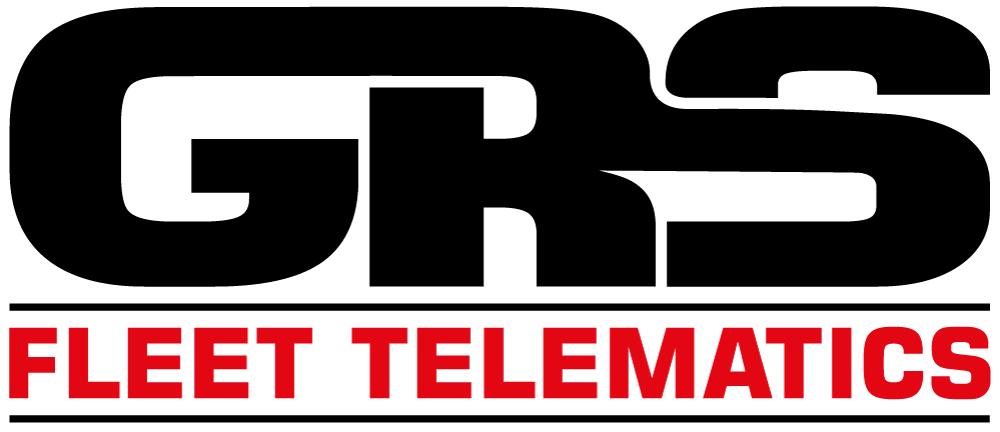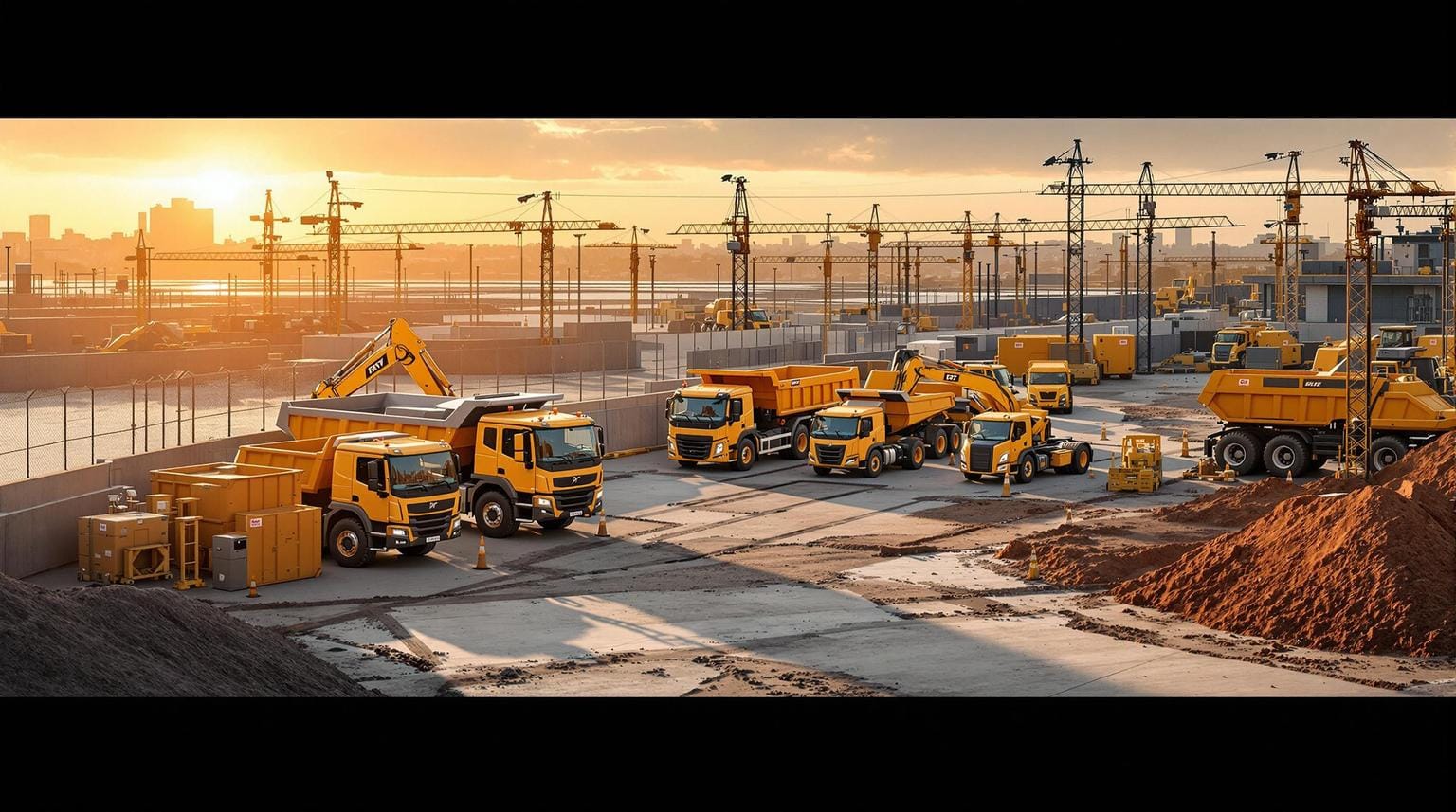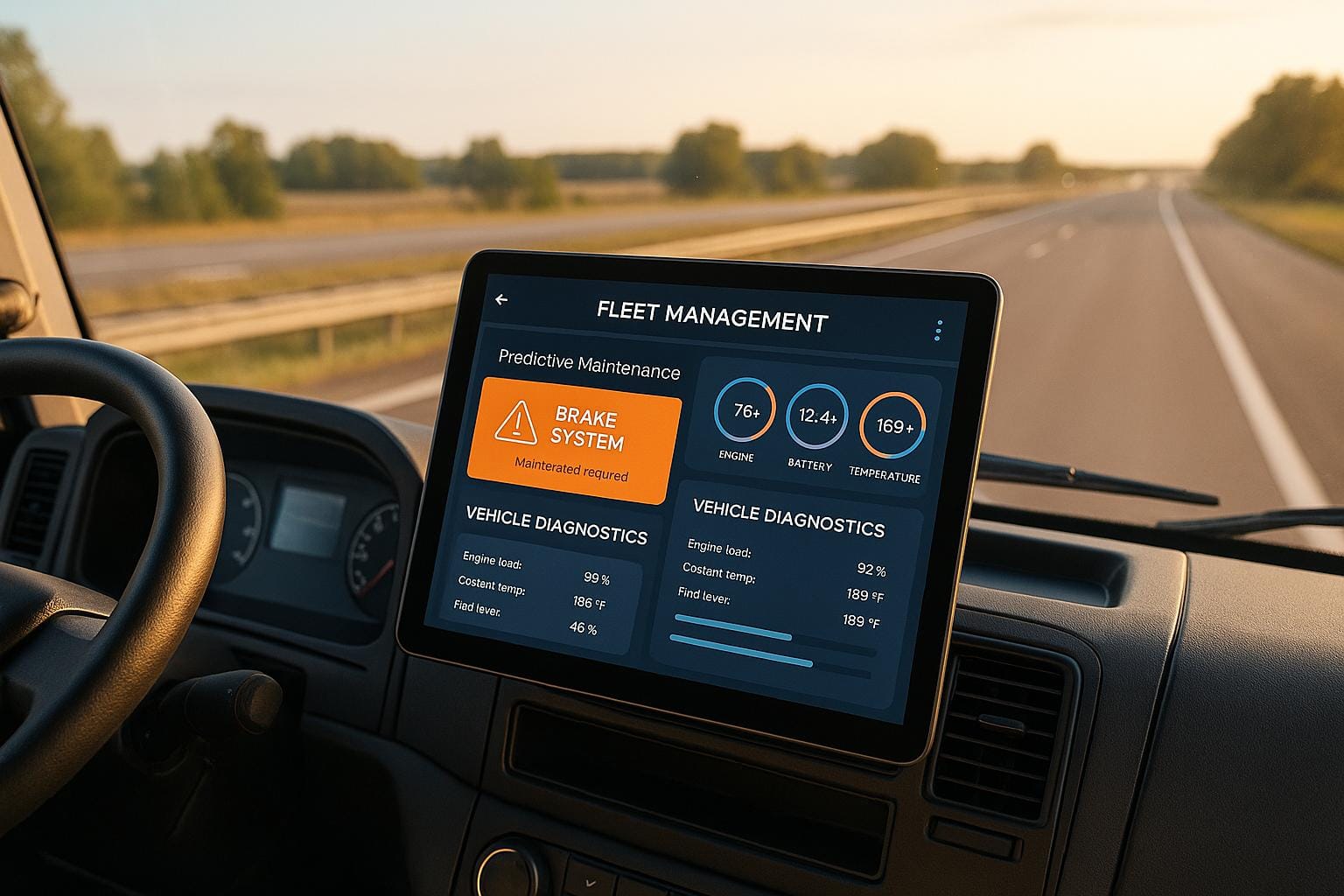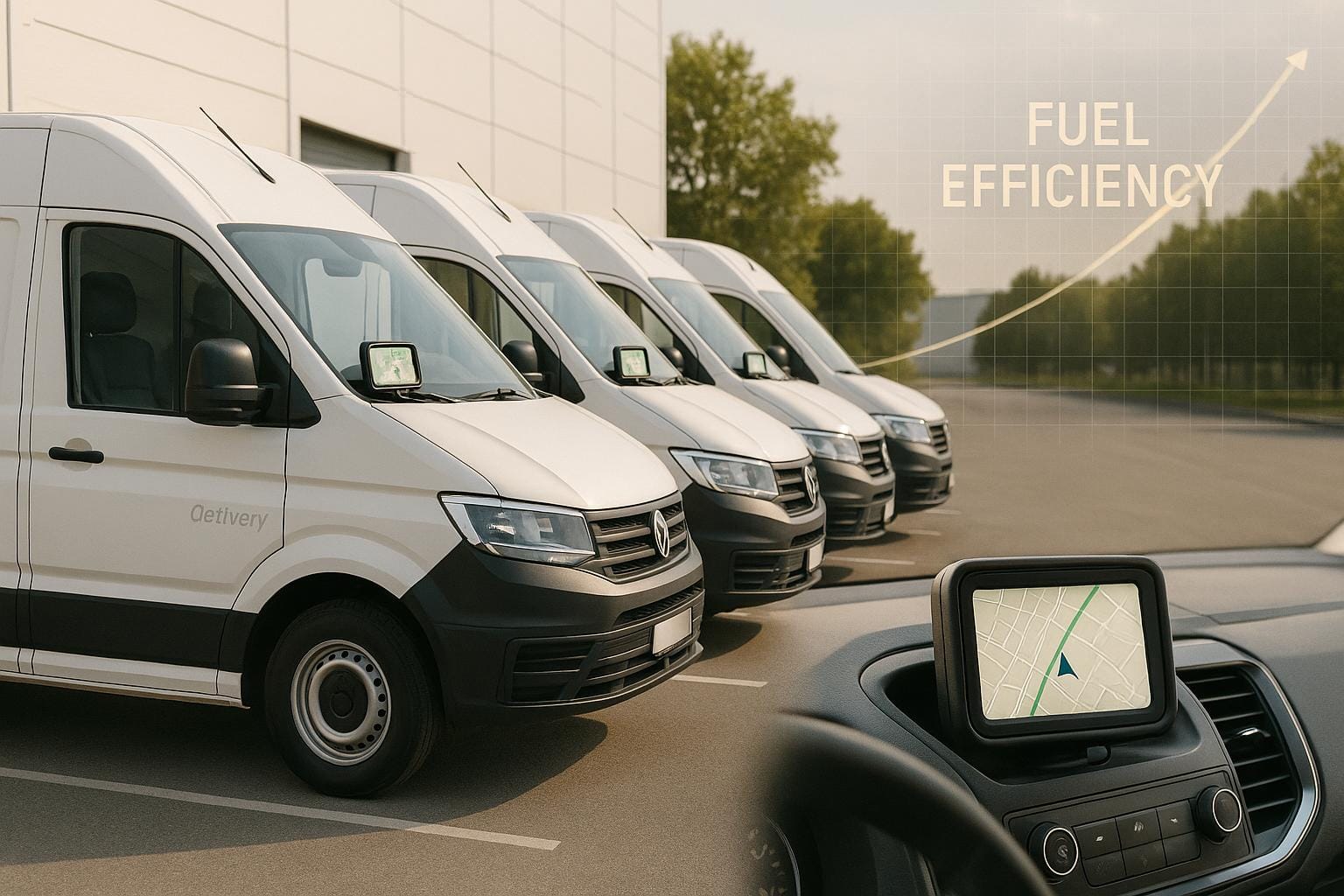Theft and inefficiency are costing UK construction fleets billions annually. Equipment theft alone exceeds £1 billion per year, with a theft occurring every 12 minutes and only 15% of stolen items recovered. Rising fuel costs and under-utilised vehicles add to the financial strain, with 25% of fleet vehicles sitting idle.
Telematics technology offers solutions by improving security and efficiency. Key benefits include:
- Security: Dual-layer tracking, geofencing, and remote immobilisation help recover stolen equipment and deter theft.
- Efficiency: Real-time fuel monitoring reduces idling by 10-15%, saving up to £500,000 annually in fuel for large fleets. Predictive maintenance cuts downtime by 25% and repair costs by 20%.
- Compliance: Simplifies adherence to UK regulations like FORS, CLOCS, and DVS.
Mapon Across Industries | How Construction can use Telematics Solutions
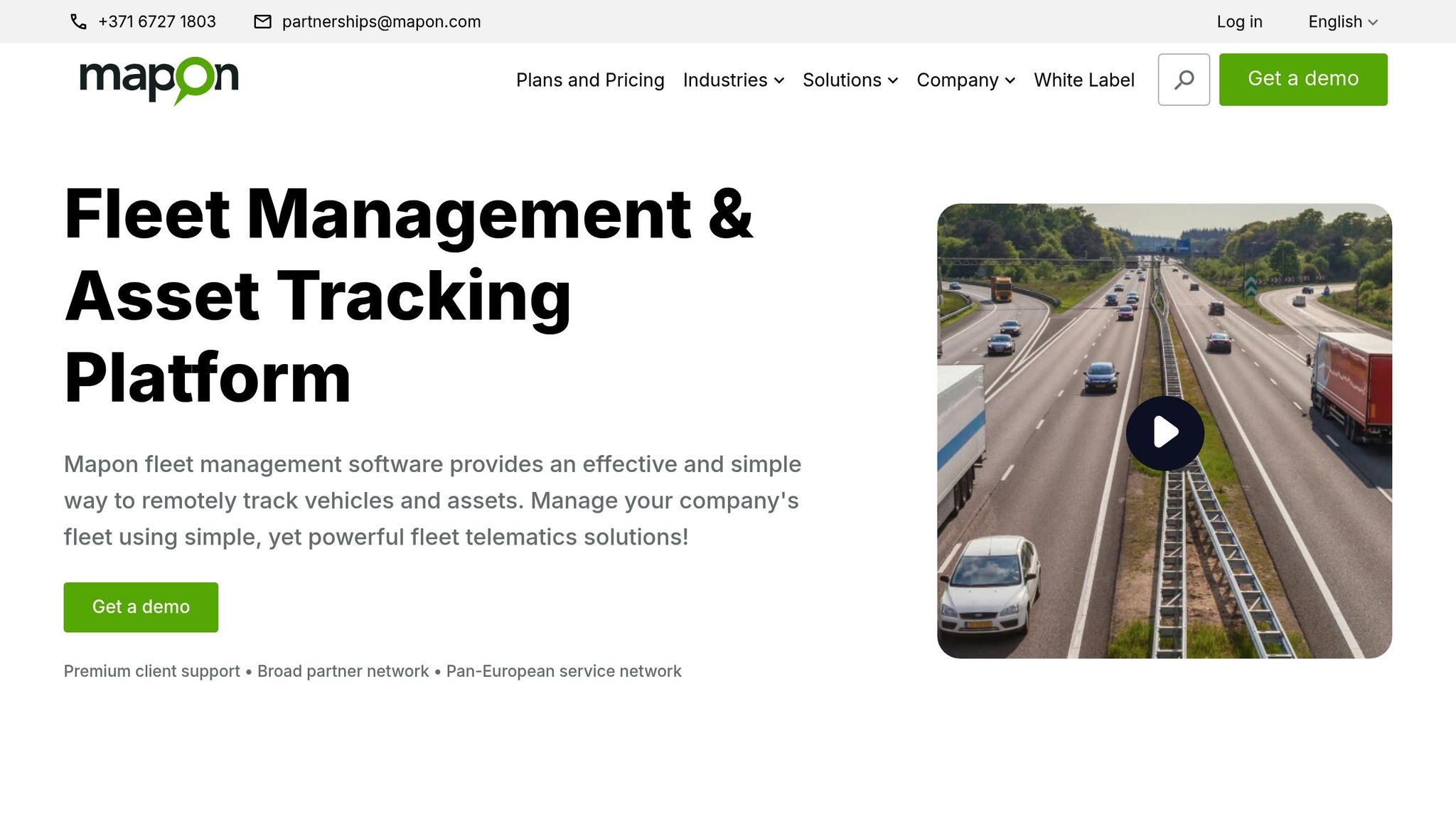
Improving Fleet Security with Telematics Technology
Telematics technology plays a crucial role in safeguarding construction fleets by combining advanced tracking systems with practical security measures. This blend helps reduce the risks of theft and unauthorised use of equipment.
Dual-Layer Tracking Systems
Telematics systems are already known for their detailed monitoring capabilities, but dual-layer tracking takes this a step further. These systems use primary GPS tracking to provide real-time location data, while a secondary layer - such as Bluetooth or Wi-Fi - ensures continued monitoring even if the primary tracker is tampered with. This redundancy strengthens the ability to track assets effectively.
Dual-frequency GPS is another valuable feature, offering improved accuracy and resistance to signal jamming, whether in busy urban areas or remote locations.
"The effort and time required to take off tracking devices can be significant deterrents for criminals." - Gabe Marquez, special agent, National Insurance Crime Bureau
Additionally, dead reckoning technology can estimate an asset's position when GPS signals are weak or unavailable, ensuring continuous location tracking.
Physical Security Measures
Physical security measures can complement telematics systems, creating a layered defence against theft. For example, parking equipment closely together makes it harder for thieves to target individual machines. Labelling assets with visible tracking tags also acts as a deterrent, signalling that the equipment is protected by monitoring systems. These practical steps enhance the effectiveness of telematics by adding a visible layer of protection.
Geofencing and Alert Systems
Geofencing technology offers proactive protection by setting up virtual boundaries around key areas, such as construction sites, storage locations, or maintenance zones. Using GPS coordinates, these boundaries trigger real-time alerts whenever equipment moves outside the authorised zones without permission. This enables fleet managers to act quickly and prevent potential losses.
To maximise its effectiveness, geofencing can be fine-tuned with time-based restrictions. For instance, boundaries can allow movement during working hours but send alerts for unauthorised activity at night or during downtime. This approach has proven successful - one contractor recovered a £38,000 backhoe, while another avoided losses of up to £1.9 million thanks to timely geofencing alerts.
Many telematics systems also include remote immobilisation features, allowing fleet managers to disable stolen equipment as soon as unauthorised movement is detected. By integrating geofencing, dual-layer tracking, and remote immobilisation, telematics delivers a comprehensive solution for improving fleet security.
Boosting Fleet Efficiency Through Telematics Data
Telematics technology is reshaping how construction fleets operate by delivering valuable insights into everyday activities. This allows managers to cut costs and make better use of their assets. The data collected goes well beyond just tracking locations - it provides a detailed view of equipment performance across different sites and conditions. Let’s dive into how targeted fuel monitoring can lead to immediate cost savings.
Fuel Monitoring and Cost Reduction
Fuel costs are a major burden for construction fleets, with 39% of fleet operators citing rising fuel prices as a key concern. Telematics systems tackle this issue by tracking fuel consumption in real time, helping to spot inefficiencies that might otherwise go unnoticed.
One area where savings are immediate is reducing idling time. Telematics can typically cut nonproductive idling by 10–15%. For example, a large fleet managed to save 22,700 litres of fuel per week - reducing consumption by 20%. This translated to over £500,000 in annual savings and a weekly reduction of 61 tonnes in carbon emissions.
"Without telematics, managers don't have the machine visibility they need to put procedures in place and change operator behaviour."
– Mike Granruth, Director of Business Development at Trimble
Telematics also strengthens operator training by providing actionable data. It monitors driving behaviours like harsh acceleration, excessive idling, and inefficient machine use, enabling targeted coaching programmes that promote fuel-efficient practices.
But the benefits don’t stop at fuel savings. Telematics also revolutionises maintenance strategies.
Predictive Maintenance Planning
Telematics shifts maintenance from a reactive approach to a predictive one using real-time engine diagnostics. This change can reduce equipment downtime by up to 30%, cut maintenance costs by 20%, and lower unexpected failures by as much as 90% [7]. For instance, one construction company saved about £77,000 in a year by installing vibration and temperature sensors on heavy machinery. This allowed them to predict issues early and reduce downtime by 25%.
"You can never eliminate downtime because maintenance still needs to happen. But telematics helps an equipment manager pick a good time to schedule it when the downtime will be least impactful."
– Ted Polzer, Director of Product and Customer Support for North America at Case Construction
By keeping tabs on key parameters like engine hours, hydraulic pressure, coolant temperature, and oil levels, maintenance teams can address problems during planned downtime. This proactive approach can reduce the mean time to repair (MTTR) by 60% and extend equipment lifespan by an average of 30% [7].
Equipment Usage and Allocation Analysis
Construction projects often span multiple sites, making efficient equipment allocation a challenging task. Telematics provides utilisation data that shows which machines are being used effectively and which ones are sitting idle. Heatmaps reveal where equipment is most active, helping managers redeploy assets and cut down on unnecessary rentals.
Take Lunar Constructions, for example - a regional company that equipped its 30-machine fleet with telematics. By identifying underused equipment and reallocating it to active projects, they increased utilisation by 18%. This improvement led to an estimated annual revenue boost of around £577,000.
"Things have evolved from knowing where a piece of equipment is, to knowing what that piece of equipment is doing. That type of information empowers not only those in charge of managing equipment, but also those who manage jobsites and the business as a whole."
– Mike Granruth, Director of Business Development at Trimble
Additionally, telematics simplifies logistics with transfer logs that track equipment movement between sites. Dispatchers can allocate the nearest available asset for new jobs, reducing unnecessary travel and preventing equipment hoarding. Over time, historical data also aids in long-term planning and helps determine the optimal fleet size.
Setting Up Telematics for Construction Fleets
Rolling out telematics in construction fleets calls for careful planning and a methodical approach. It’s essential to understand your fleet's specific needs before diving into any technology decisions. Following these steps will help you establish a solid foundation to maximise the security and efficiency benefits telematics can bring.
Evaluating Your Fleet and Security Requirements
Before committing to telematics, take a close look at your fleet to identify risks, inefficiencies, and potential vulnerabilities. This evaluation is key to choosing the right solutions and addressing the most pressing challenges first.
Start by cataloguing your fleet. Record the type, usage patterns, and locations of each asset. Pinpoint high-risk areas where theft or unauthorised access is more likely.
Don’t overlook the human side of the equation. Talk to drivers, site managers, and equipment operators who interact with the assets daily. Their hands-on experience can reveal issues that might not be obvious from a management perspective. Additionally, consider everyone who could be affected by security breaches - employees, subcontractors, even visitors - so you can prioritise the most critical risks.
Finally, assess your current security and monitoring measures to spot gaps. This will help you identify where telematics can step in to improve visibility, such as tracking equipment location or analysing usage patterns. Once you’ve mapped out your risks, you’ll be ready to choose the hardware and software that best meet your needs.
Selecting Hardware and Software Solutions
Choosing the right telematics tools means balancing functionality with practical concerns like durability and ease of installation. Construction sites are tough environments, so your hardware must handle dust, vibrations, extreme temperatures, and impacts. GPS-enabled devices, sturdy antennas, and reliable mobile connectivity are essential for transmitting data effectively.
Look for hardware that’s future-ready. Scalable devices that can accommodate sensor upgrades will save you from costly replacements as your monitoring needs grow. Don’t forget to factor in costs like installation, de-installation, and cancellation fees while ensuring the equipment is built to last.
When it comes to software, prioritise platforms that integrate smoothly with your existing workflows. Systems with mobile apps or mobile-friendly interfaces are especially useful for managers who need access to information on-site. Before making a final decision, gather input from project managers, site supervisors, and administrative staff to ensure the system meets everyone’s needs.
Think of your telematics provider as a long-term partner, not just a vendor. Check their track record with other construction companies, and ask for references from businesses similar to yours. Pay attention to their customer service and ongoing support. Be clear on all costs, including fees for extra users, frequent updates, or expanded data access. And be cautious of exaggerated claims about savings - consider running a pilot programme to test the system before committing fully.
Creating Data and Reporting Systems
The true value of telematics lies in turning raw data into actionable insights. To make this happen, your system needs to be configured to deliver relevant information without overwhelming users with unnecessary details.
System Configuration and Access Management
Start by aligning your telematics setup with your business goals. Identify the data points that directly support these objectives. Set up user-specific permissions and automated alerts for critical events like unauthorised movement, maintenance needs, or safety incidents. However, avoid overloading users with alerts, as this can lead to notification fatigue.
Training and Implementation Strategy
Introduce telematics gradually rather than deploying it across your entire fleet all at once. Begin with a small group of vehicles or equipment to refine processes and address any issues before scaling up. Train your mechanics to handle basic tasks like installation, troubleshooting, and maintenance of telematics devices. Ensure all users understand how the platform supports their daily work.
Once the system is in place and your team is trained, focus on analysing the data to drive ongoing improvements.
Data Analysis and Continuous Improvement
Don’t collect data for the sake of it - focus on metrics that can lead to meaningful changes. Analyse performance trends to find areas for improvement, and keep an eye on key performance indicators tied to your initial goals. Schedule regular check-ins with your telematics provider to optimise system performance and ensure you’re getting the support you need. This collaborative effort will help you adapt the system as your business evolves while demonstrating its value to stakeholders.
With these strategies, telematics can seamlessly integrate into your broader fleet management practices, enhancing both security and operational efficiency.
UK Requirements for Construction Fleet Management
Managing construction fleets in the UK comes with its fair share of challenges, from navigating strict regulations to dealing with unpredictable weather. Staying on top of these requirements is not just about avoiding penalties - it’s about safeguarding your investment in vehicles and equipment while maintaining smooth operations.
Meeting UK Regulations and Standards
The construction industry in the UK operates under stringent rules aimed at improving safety and reducing environmental harm. For fleet managers, understanding and adhering to these standards is non-negotiable, as non-compliance can lead to hefty fines and operational setbacks.
FORS and CLOCS Accreditation
Safety is a top priority in construction fleet management, and schemes like the Fleet Operator Recognition Scheme (FORS) and Construction Logistics and Community Safety (CLOCS) are central to achieving this. These standards are designed to minimise collisions with vulnerable road users and demonstrate a commitment to safety. For example, since January 2019, Sheet Piling (UK) Ltd has exclusively worked with HGV operators holding FORS and CLOCS certifications, prioritising those with Silver-level accreditation. This approach has become a key part of their operational strategy and reputation.
Direct Vision Standard (DVS)
In Greater London, HGVs over 12 tonnes must comply with the Direct Vision Standard (DVS) by holding a valid safety permit. For companies needing extra time to install Progressive Safe Systems (PSS), Transport for London offers a grace period to help ensure compliance.
Non-Road Mobile Machinery (NRMM) Regulations
From 1 January 2025, all non-road mobile machinery used on sites within Greater London must meet Stage IV standards at a minimum. Generators, however, must continue to meet Stage V requirements. It’s essential to review the NRMM register to confirm that all equipment aligns with these standards.
Construction Logistics Plans (CLPs)
CLPs are not a one-and-done requirement - they’re dynamic documents that need regular updates. These plans aim to minimise the impact of construction vehicle movements on local communities and road networks. Principal Contractors should ensure CLPs are consistently reviewed and that all stakeholders, including the supply chain, adhere to elevated safety and environmental standards such as FORS, CLOCS, and DVS.
HGV Roadworthiness Testing
Routine testing remains mandatory for certain vehicles to ensure ongoing compliance with safety standards. Regular inspections not only help prevent costly breakdowns but also keep fleets operating within the law.
Telematics systems can make compliance easier by automating tasks like vehicle tracking, driver behaviour monitoring, and generating reports for regulatory adherence. Real-time alerts can also help you avoid violations by notifying you when vehicles enter restricted areas or operate outside permitted hours. However, compliance is only one piece of the puzzle - managing the UK’s challenging weather conditions is another.
Managing UK Weather Conditions
The UK’s unpredictable weather adds another layer of complexity to construction fleet management. With 75.2% of UK and European construction managers reporting financial losses due to extreme weather, it’s clear that proactive planning is essential.
Winter Preparedness
Harsh winter conditions can wreak havoc on fleets, causing issues like frozen engines, salt corrosion, and reduced visibility. To minimise these risks, ensure vehicles are equipped with winter tyres, use winter-grade fluids, inspect battery connections for corrosion, and apply underbody sealants after regular washes. Each vehicle should also carry a cold weather kit, including essentials like blankets, gloves, a torch, a first-aid kit, and an ice scraper.
Real-Time Weather Monitoring
Weather monitoring tools are invaluable for avoiding delays. For instance, heavy rainfall in February 2024 led to a 1.9% drop in the construction sector’s output. By using on-site sensors and local weather stations, you can schedule weather-sensitive activities - such as concrete pouring or crane operations - during optimal conditions.
Telematics systems further enhance weather preparedness by providing real-time alerts about abrupt changes. Weather-resistant hardware ensures uninterrupted data flow, even in severe conditions, while calibrated systems can warn you of approaching weather fronts. This gives you time to secure equipment and adjust schedules as needed.
Training workers to identify weather-related risks like heat exhaustion or hypothermia is equally important. Emergency response plans should be in place for severe events such as flooding or high winds, and sites should be equipped with measures like proper drainage, temporary enclosures, and sheltered storage for materials.
Combining traditional preparation methods with modern telematics tools ensures your fleet is ready to tackle both compliance challenges and the elements. This proactive approach keeps operations running smoothly, no matter what the UK weather throws your way.
Conclusion: Building Secure and Efficient Construction Fleets
The construction industry is grappling with rising costs, tighter regulations, and security risks. Yet, by combining telematics technology with forward-thinking management strategies, fleet managers can turn these challenges into opportunities to gain an edge.
Telematics has the potential to influence up to 70% of fleet operating costs. Adopting a tech-driven approach to maintenance can cut unscheduled downtime by 25% and save an average of £1,500 per vehicle annually on repairs. These aren't just small wins - they represent major shifts that can significantly improve profitability. This is especially crucial for UK fleets, which face unique challenges like strict regulations and unpredictable weather conditions.
"There's an opportunity for contractors to create, and continually, refine a workplace culture that can help offset risk and result in positive impacts within their operations." – Frank Baxter, The Baldwin Group
Moving from reactive to proactive fleet management is key to avoiding costly setbacks. Telematics offers the insights needed to monitor equipment location, usage, condition, and hours. By leveraging this data, fleet managers can reduce downtime, lower repair expenses, and extend the lifespan of their vehicles.
For UK-based fleets, telematics also simplifies compliance and weather preparedness. Automated driver monitoring, compliance reporting, and weather-responsive tools make day-to-day operations smoother and more efficient.
GRS Fleet Telematics provides a tailored solution for UK construction fleets, with hardware starting at just £35 and monthly services from £7.99 per vehicle. Its dual-tracker system and 91% vehicle recovery rate directly address security concerns, while advanced tracking and monitoring features enhance both efficiency and compliance.
Telematics also helps address workforce challenges. With 81% of construction companies struggling to fill vacancies, making the most of existing resources has never been more important. By giving fleet managers the tools to make data-driven decisions, telematics transforms fleet management from a cost burden into a strategic advantage.
In today’s construction landscape, success doesn’t come from simply reacting to problems - it’s about staying ahead of them. Telematics offers the visibility, prevention, and continuous improvement needed to build fleets that are secure, efficient, and profitable.
FAQs
How can telematics improve the security of construction fleets?
Telematics technology boosts the safety and security of construction fleets by offering tools like real-time tracking, geofencing, and remote immobilisation. With real-time tracking, managers can always see where their vehicles are. Geofencing adds another layer of protection by allowing virtual boundaries to be set, triggering alerts if a vehicle moves outside its assigned area. And in the unfortunate event of theft, remote immobilisation lets managers disable vehicles from a distance, making asset recovery far more manageable.
On top of that, telematics systems provide valuable insights into driver behaviour. This helps to reduce accidents and promotes safer practices across the fleet. Together, these features not only protect the fleet but also keep daily operations running efficiently.
What are the main advantages of using telematics for predictive maintenance in construction fleets?
Benefits of Telematics for Predictive Maintenance in Construction Fleets
Telematics brings a host of advantages to construction fleets, especially when it comes to predictive maintenance. One of the biggest perks is minimising downtime. By keeping a close eye on equipment health in real time, telematics enables maintenance to be scheduled before something breaks down. This means fewer interruptions and smoother project timelines.
Another major win is saving money. Predicting maintenance needs accurately helps avoid costly repairs and keeps machinery running longer. Plus, it’s a smart way to stretch the lifespan of your equipment. On top of that, telematics plays a role in boosting safety. By ensuring machinery meets safety standards, it reduces the chances of accidents on-site.
Finally, telematics delivers valuable insights that help managers make smarter decisions. With detailed data on equipment performance and maintenance schedules, it’s easier to allocate resources effectively and keep the fleet running at peak efficiency.
How can telematics systems help construction fleet managers comply with UK regulations?
Telematics systems play a crucial role in helping construction fleet managers stay compliant with UK regulations. They provide real-time monitoring of key factors like driver behaviour, vehicle performance, and maintenance schedules. This technology takes the hassle out of compliance by automating essential reports, tracking working hours in line with the Working Time Directive, and ensuring vehicles meet both emission standards and safety requirements.
Features like real-time alerts for inspections and servicing ensure vehicles remain roadworthy, reducing the risk of non-compliance. Additionally, by analysing data trends, fleet managers can tackle potential problems before they escalate, keeping operations running smoothly while meeting regulatory demands.
